
Panoramic paintings are massive artworks that reveal a wide, all-encompassing view of a particular subject, often a landscape, military battle, or historical event. They became especially popular in the 19th century in Europe and the United States, inciting opposition from some writers of Romantic poetry. A few have survived into the 21st century and are on public display. Typically shown in rotundas for viewing, panoramas were meant to be so lifelike they confused the spectator between what was real and what was image.

Scheveningen is one of the eight districts of The Hague, Netherlands, as well as a subdistrict (wijk) of that city. Scheveningen is a modern seaside resort with a long, sandy beach, an esplanade, a pier, and a lighthouse. The beach is popular for water sports such as windsurfing and kiteboarding. The harbour is used for both fishing and tourism.

A panorama is any wide-angle view or representation of a physical space, whether in painting, drawing, photography, film, seismic images, or 3D modeling. The word was coined in the 18th century by the English painter Robert Barker to describe his panoramic paintings of Edinburgh and London. The motion-picture term panning is derived from panorama.
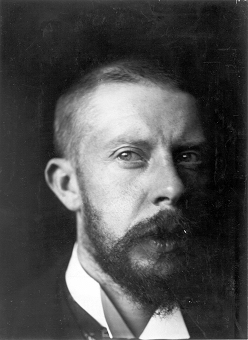
George Hendrik Breitner was a Dutch painter and photographer. An important figure in Amsterdam Impressionism, he is noted especially for his paintings of street scenes and harbours in a realistic style. He painted en plein air, and became interested in photography as a means of documenting street life and atmospheric effects – rainy weather in particular – as reference materials for his paintings.
A cyclorama is a panoramic image on the inside of a cylindrical platform, designed to give viewers standing in the middle of the cylinder a 360° view, and also a building designed to show a panoramic image. The intended effect is to make viewers, surrounded by the panoramic image, feel as if they were standing in the midst of the place depicted in the image.
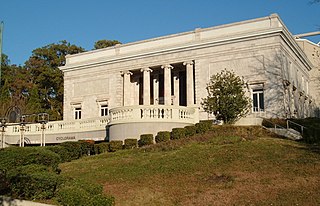
The Atlanta Cyclorama and Civil War Museum was a Civil War museum located in Atlanta, Georgia. Its most noted attraction was the Atlanta Cyclorama, a cylindrical panoramic painting of the Battle of Atlanta. As of December 2021, the Cyclorama is located at the Atlanta History Center, while the building is now Zoo Atlanta's Savanna Hall.
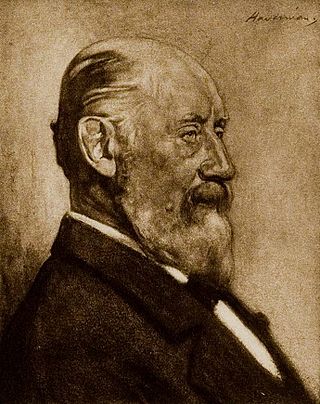
Hendrik Willem Mesdag was a Dutch marine painter.

The Hague School is a group of artists who lived and worked in The Hague between 1860 and 1890. Their work was heavily influenced by the realist painters of the French Barbizon school. The painters of the Hague school generally made use of relatively somber colors, which is why the Hague School is sometimes called the Gray School.

The Mesdag Collection is an art museum in The Hague, Netherlands. It is managed by the Van Gogh Museum.
The Battle of Gettysburg, also known as the Gettysburg Cyclorama, is a cyclorama painting by the French artist Paul Philippoteaux depicting Pickett's Charge, the climactic Confederate attack on the Union forces during the Battle of Gettysburg on July 3, 1863.
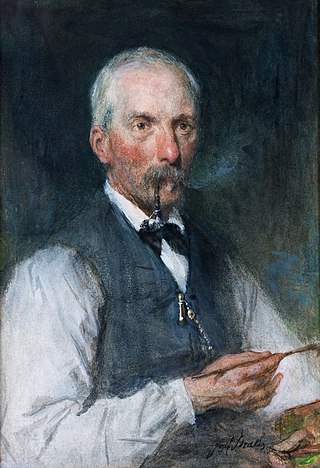
Jan Hendrik Weissenbruch, also known as Hendrik Johannes Weissenbruch was a Dutch painter of the Hague School. He is noted especially for his watercolours.

Théophile Emile Achille de Bock was a Dutch painter belonging to the Hague School. Although many denigrate De Bock's work as too gray and too sketchy, Hague School champions love his work. Even Van Gogh was convinced of De Bocks "artistic temperament", although he eventually found his choice of subject too limited and tried to get De Bock to paint figure studies. But De Bock stuck to the subject he was good at, the Dutch landscapes.
The International Panorama Council (IPC) is a nongovernmental, not-for-profit organization, subject to Swiss law. It is a global network involving museum directors, managers, artists, restorers and historians who deal with the historical or the contemporary art and media forms of the panorama. The organization comprises members from all over the world who are either representatives of museums and research institutes or private researchers and enthusiasts. The organization was founded in 1992 as the European Panorama Conference in Szeged, Hungary, and renamed in 1998 in Altoetting, Germany, at the International Panorama Conference. Since 2003 the organization is called International Panorama Council. IPC has been a Membership Association since 2010. It is governed by a member-elected Executive Board whose Secretary-general acts as the operational center for the Board’s members.

Henri Félix Emmanuel Philippoteaux was a French artist and illustrator, known primarily as a battle painter.
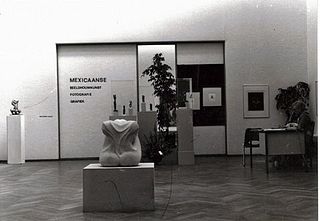
Pulchri Studio is a Dutch art society, art institution and art studio based in The Hague ('s-Gravenhage), Netherlands.

The Museum Kunst der Westküste is a non-profit foundation, located in Alkersum on the north Frisian island, Föhr. The museum collects, researches, communicates and exhibits art that deals with the themes of sea and coast. The museum began with a collection of paintings donated by the museum's founder, Frederik Paulsen, chairman of Ferring Pharmaceuticals.

Paul Joseph Constantin Gabriël or Paul Gabriël was a painter, draftsman, watercolorist, and etcher who belonged to the Hague School.

Sina (Sientje) van Houten was the wife of Hendrik Willem Mesdag, the Dutch marine painter of the Hague School, and a painter herself.
Henk Gerrit Guth was a Dutch artist who had a career in Australia, remembered for "Panorama Guth" (1975–2005), a cyclorama in Alice Springs, Northern Territory.

Geesje Kwak was a model of the painter and photographer George Breitner. She became known for the series of seven paintings that Breitner made of her in 1893 and 1894 as the girl in a red and white kimono lying on a sofa and standing in front of a mirror in an oriental interior.

















